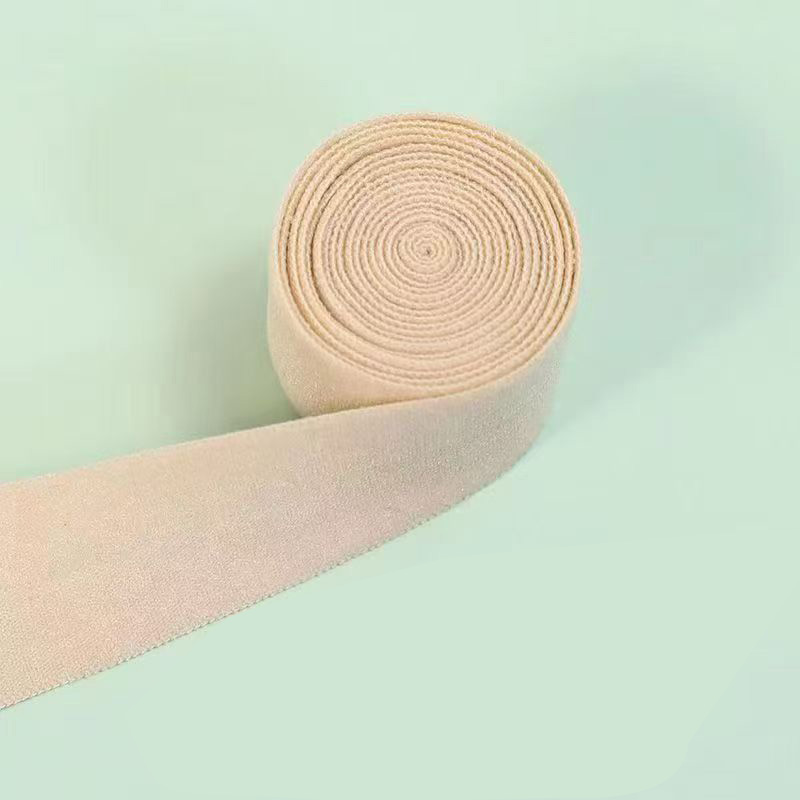Industry
 By Admin
By Admin
How Digital Jacquard Technology Is Changing Elastic Production
The elastic industry has seen steady innovation over the years, but the introduction of digital jacquard technology has brought noticeable changes to how elastic bands are produced. This technology influences various types of elastic, including the elastic band for sewing, braided elastic tape, and flat braided elastic, allowing manufacturers to meet diverse demands with increased flexibility and precision.

Digital jacquard technology revolutionizes the weaving process by integrating computerized control systems that manage individual warp threads. This setup enables intricate and complex patterns to be woven into elastic bands with remarkable accuracy. For elastic bands for sewing applications, this means the possibility of customized designs that maintain consistent quality throughout the length of the tape. This is especially beneficial for industries that require detailed branding or specific visual patterns on their elastic components.
One significant advantage of digital jacquard technology is its ability to handle the production of braided elastic tape with greater speed and adaptability. Traditional weaving methods often limited the complexity of designs and slowed down the production cycle. However, digital Jacquard looms can switch between patterns swiftly without the need for manual adjustments. This allows manufacturers to produce multiple versions of braided elastic tape within shorter advance times, catering to a broader range of consumer preferences and market trends.
Flat braided elastic, a popular variant of elastic band for sewing projects, benefits from the enhanced control that digital jacquard technology provides. The technology's precision ensures that the flat braided elastic maintains uniform tension and elasticity, which is essential for applications in garments, medical supplies, and sportswear. Moreover, the ability to create detailed patterns directly into the flat braided elastic adds functional value, such as improved grip or aesthetic appeal, without compromising the material's stretch and recovery properties.
In addition to design flexibility, digital jacquard technology contributes to material efficiency. By optimizing thread usage during weaving, it reduces waste and lowers production costs. This is particularly important for manufacturers focusing on braided elastic tape and flat braided elastic, where less excess material can have a direct impact on pricing and sustainability efforts. The precise control over the weaving process also advances to consistent product quality, reducing the number of defective elastic bands for sewing and fewer returns or customer complaints.
The demand for elastic band for sewing with specific functional and decorative characteristics has grown steadily, and digital jacquard technology meets this demand by allowing easy customization. Whether it is adjusting the width, pattern density, or color combinations, the technology provides manufacturers the tools to create elastic bands that fit precise customer requirements. Braided elastic tape producers can quickly prototype new designs and adapt to feedback, which improves their responsiveness to changing fashion and industrial needs.
Flat braided elastic produced with digital jacquard systems often shows advanced visual clarity in patterns and logos, which can enhance the appeal of finished products. This is important in markets where elastic bands serve not only a practical purpose but also a branding role. By embedding logos and intricate designs directly into the elastic, companies can offer personalized products without the need for additional printing or labeling processes.
The scalability of digital jacquard technology also plays a role in making elastic band for sewing accessible to a wide range of manufacturers, from small workshops to larger production facilities. The technology's programmability means that changes in design or specifications can be implemented quickly without the need for costly retooling. This flexibility is particularly useful when producing braided elastic tape for seasonal collections or limited-edition products, where production runs need to be both efficient and adaptable.
Moreover, flat braided elastic woven on digital jacquard looms can achieve a balance between strength and softness, catering to various applications. For instance, in sportswear, the flat braided elastic must withstand repeated stretching while providing comfort. The controlled weaving process helps ensure that these qualities are met consistently. This has led to a wider acceptance of digitally woven elastic bands in specialized sectors where performance and appearance both matter.
Overall, digital jacquard technology marks a step forward in elastic production, offering a range of benefits for elastic band for sewing, braided elastic tape, and flat braided elastic. Its capacity for detailed customization, efficient material use, and rapid production adjustments aligns well with the evolving needs of manufacturers and end-users alike. As this technology becomes more widely adopted, it is likely to continue influencing the quality and variety of elastic products available on the market.



 English
English Español
Español عربى
عربى Tiếng Việt
Tiếng Việt

